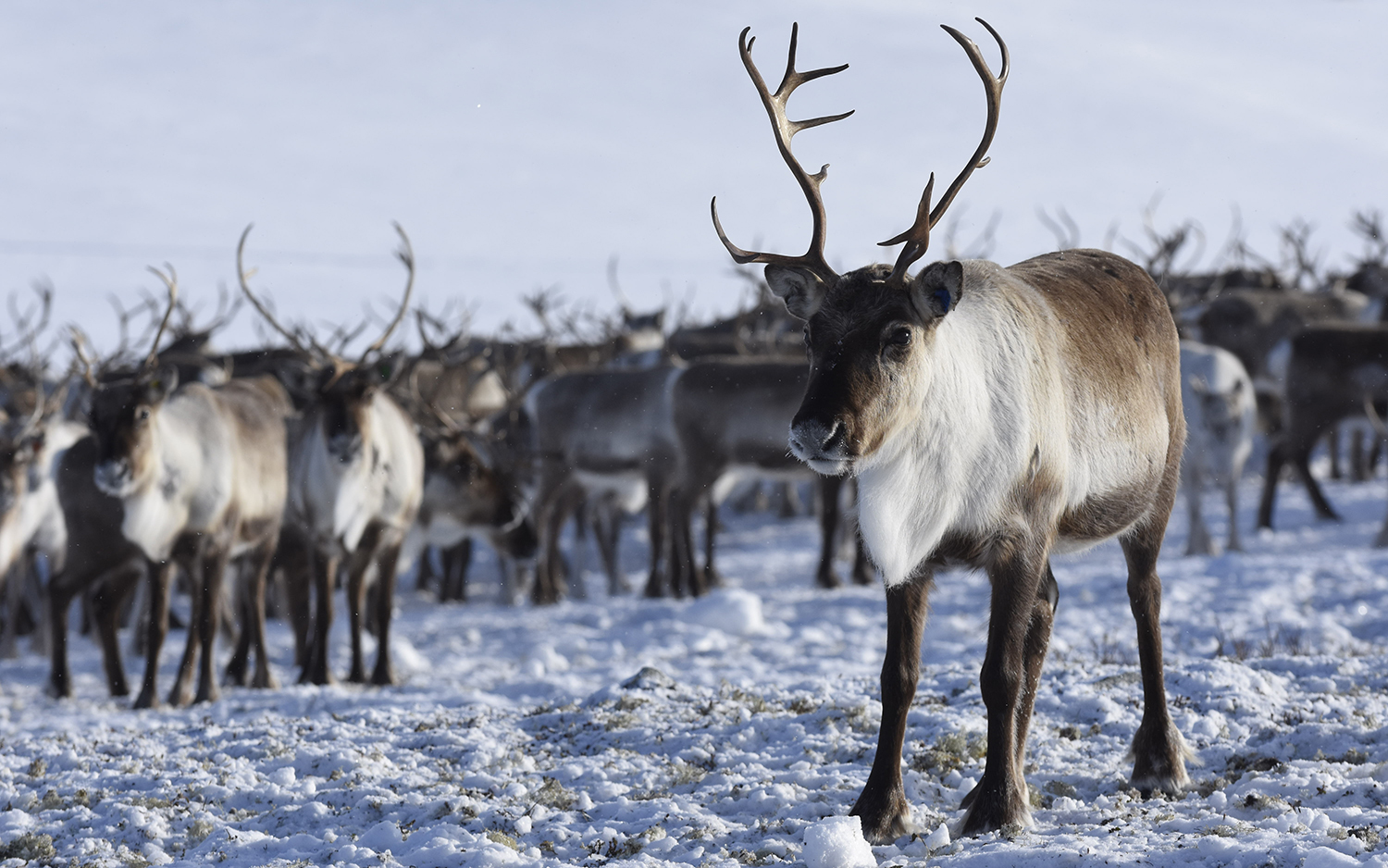Reindeer Cyclones Are Real, and You Definitely Don't Want to Get Caught in One

Vikings hunting reindeer in Norway were once confounded by "reindeer cyclones"; a threatened herd would literally run circles around the fierce hunters, making it nearly impossible to target a single animal.
Filmmakers recently captured incredible aerial footage of one of these reindeer cyclones, which aired Feb. 13 on PBS in the documentary "Wild Way of the Vikings," a program about Vikings and the wilderness they inhabited around A.D. 1000. [Photos: Ancient Arrows from Reindeer Hunters Found in Norway]
One of the documentary's most striking scenes shows a re-enactment of a Viking hunt interspersed with real footage of reindeer herds. Reindeer were important to the Vikings for their meat, hides, antlers and bones, according to the film.
In the cyclone scene, a lone hunter (an actor playing a Viking) approaches the herd; he notches and releases an arrow. The footage that follows shows an actual herd of reindeer running in circles. As the swirling mass of bodies thunders along a circular path, an overhead camera reveals that the herd's momentum follows a spiral shape, drawing tightly toward the cyclone's "eye" at the center.
Faced with this spinning reindeer stampede, any predator — wolf, bear or human — would have a very tough time targeting and overpowering a single reindeer, making this a formidable defense strategy, according to a statement from PBS.
This behavior is also practiced by reindeer kept in corrals, occurring in groups of at least 20 to 25 animals, researchers wrote in a 2002 study published in the journal Rangifer. Penned reindeer formed "cyclones" and were observed to run "invariably" in a counterclockwise direction, the scientists reported.
Opportunistic hunters
Vikings were opportunistic hunters who preyed on reindeer, birds, fish, seals, walruses and possibly even whales, Albína Hulda Pálsdóttir, a doctoral candidate with the Centre for Ecological and Evolutionary Synthesis at the University of Oslo in Sweden, told Live Science.
Get the world’s most fascinating discoveries delivered straight to your inbox.
"The Vikings really adapted to making use of everything that they could," she said.
Scientists know that Vikings hunted with bows and arrows, and used ropes and nets for fishing "and possibly birding," said Pálsdóttir, a zooarchaeologist and science adviser for the film.
However, archaeologists know little about the details of their hunting techniques, as Vikings crafted tools primarily from organic materials such as wood, rope and hide, which don't preserve well.
But in recent years, many of these ancient relics have emerged from melting ice and permafrost. This is particularly true in Norway, where ice patches — regions of long-frozen snow — are rapidly disappearing, providing archaeologists with access to Viking objects that were preserved in ice for more than a millennium, Pálsdóttir said.
"It's really adding to our understanding of their material culture, and what they may have used to hunt reindeer," she added.
You can watch the entire episode of "Wild Way of the Vikings" on the PBS website.
- Fierce Fighters: 7 Secrets of Viking Seamen
- 6 Surprising Facts About Reindeer
- In Photos: Viking Outposts Possibly Found in Canada
Originally published on Live Science.

Mindy Weisberger is a science journalist and author of "Rise of the Zombie Bugs: The Surprising Science of Parasitic Mind-Control" (Hopkins Press). She formerly edited for Scholastic and was a channel editor and senior writer for Live Science. She has reported on general science, covering climate change, paleontology, biology and space. Mindy studied film at Columbia University; prior to LS, she produced, wrote and directed media for the American Museum of Natural History in NYC. Her videos about dinosaurs, astrophysics, biodiversity and evolution appear in museums and science centers worldwide, earning awards such as the CINE Golden Eagle and the Communicator Award of Excellence. Her writing has also appeared in Scientific American, The Washington Post, How It Works Magazine and CNN.



